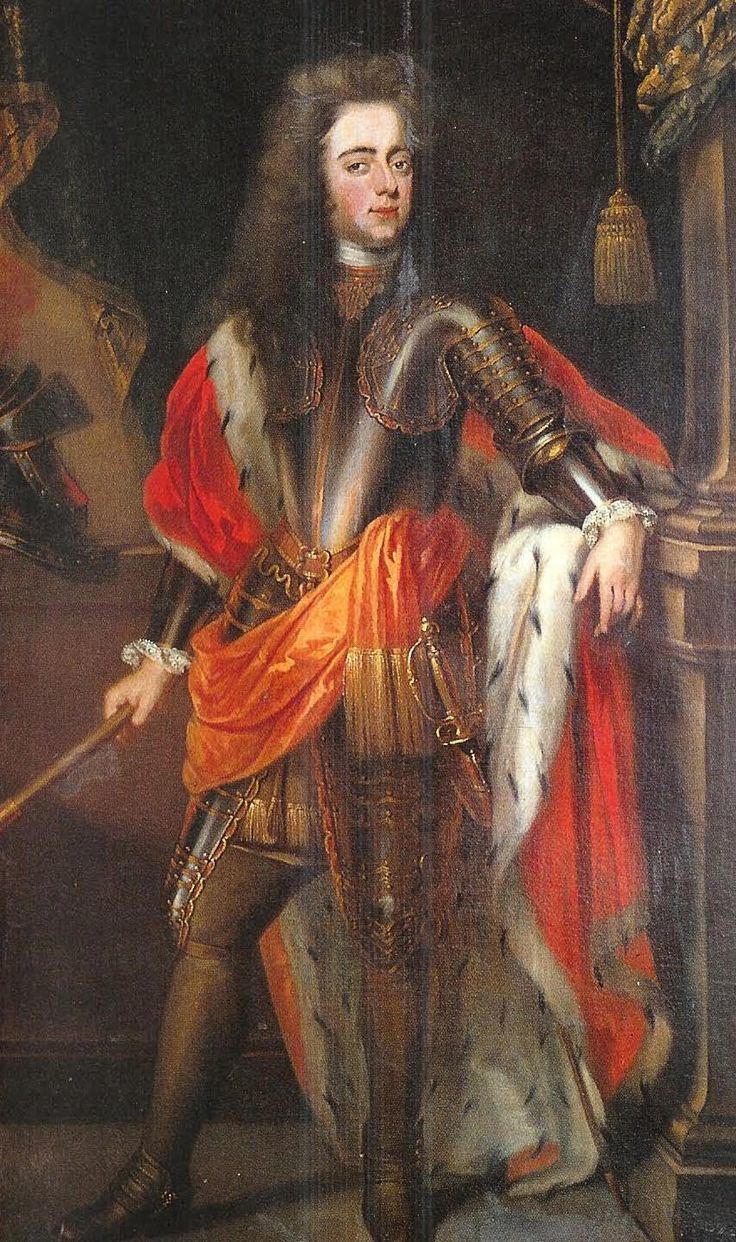Predecessor William III Predecessor Henry Casimir II | Successor William IV Name John Friso, | |
 | ||
Period 19 March 1702 – 14 July 1711 Reign 25 March 1696 – ca. 1702 Reign ca. 1702 – 14 July 1711 Died July 14, 1711, Hollands Diep, Netherlands Spouse Landgravine Marie Louise of Hesse-Kassel (m. 1709) Children William IV, Prince of Orange, Princess Amalia of Nassau-Dietz Parents Princess Henriette Amalia of Anhalt-Dessau, Henry Casimir II, Prince of Nassau-Dietz Grandchildren William V, Prince of Orange, Charles Frederick, Grand Duke of Baden, Princess Carolina of Orange-Nassau Similar People William IV - Prince of Orange, Henry Casimir II - Prince of, William V - Prince of Orange, William Frederick - Prince of, Countess Albertine Agnes of | ||
Koninklijke militaire kapel johan willem friso musikschau der nationen 2006
John William Friso, Prince of Orange-Nassau (Dutch: Johan Willem Friso van Oranje-Nassau; 14 August 1687 – 14 July 1711) became the titular Prince of Orange in 1702. He was stadtholder of Friesland until his death by drowning in the Hollands Diep in 1711. Along with his wife, Marie Louise, Friso is the ancestor of all European monarchs occupying the throne today.
Contents
- Koninklijke militaire kapel johan willem friso musikschau der nationen 2006
- Background
- Succession
- Military career and death
- Marriage and issue
- References
Background
He was the son of Henry Casimir II, Prince of Nassau-Dietz, and Princess Henriette Amalia of Anhalt-Dessau who were both first cousins of William III. As such, he was a member of the House of Nassau, and through the testamentary dispositions of William III became the progenitor of the new line of the House of Orange-Nassau.
Succession
With the death of William III, Prince of Orange, the legitimate male line of William the Silent (the second House of Orange) became extinct. John William Friso, the senior agnatic descendant of William the Silent's brother and a cognatic descendant of Frederick Henry, grandfather of William III, claimed the succession as stadtholder in all provinces held by William III. This was denied to him by the republican faction in the Netherlands.
The five provinces over which William III ruled – Holland, Zeeland, Utrecht, Gelderland and Overijssel – all suspended the office of Stadtholder after William III's death. The remaining two provinces – Friesland and Groningen – were never governed by William III, and continued to retain a separate Stadtholder, John William Friso. He established the third House of Orange, which went extinct in the male line in 1890. His son William IV, Prince of Orange, however, later became stadtholder of all seven provinces.
Because William III's heir general was King Frederick I of Prussia, the latter also claimed part of the inheritance (for example Lingen). Under William III's will, Friso stood to inherit the Principality of Orange. However, the Prussian King Frederick I also claimed the Principality of Orange in the Rhone Valley, which he later ceded to France.
Military career and death
On coming of age in 1707, John William Friso became a general of the Dutch troops during the War of Spanish Succession, under the command of the Duke of Marlborough, and turned out to be a competent officer. He commanded Dutch infantry in the battle of Oudenarde, siege of Lille, and battle of Malplaquet. The prestige that he acquired from his military service, could have favored his eventual election as a stadtholder in the remaining five provinces. However, in 1711, when traveling from the front in Flanders to The Hague in connection with his suit in the succession dispute, he drowned on 14 July, when the ferry boat on the Moerdyk was overturned in heavy weather. His son was born six weeks after his death.
Marriage and issue
On 26 April 1709, he married Princess Maria Louise of Hesse-Kassel (1688–1765), daughter of Charles I, Landgrave of Hesse-Kassel, and granddaughter of Jacob Kettler, Duke of Courland. They had two children.
John William Friso and his wife are the most recent common ancestors to all currently reigning European monarchs. This is a title he has held since 1938, when Franz Joseph II -a descendant of John William Friso, succeeded Franz I- who was not a descendant, as Prince of Liechtenstein.
